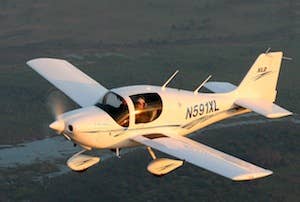
This week, Robert Goyer reported on the new certification standards that are currently in the making at the FAA. Our industry is in dire need of this change. We need it to improve our safety record and to attract more people into the wonderful world of flying.
I learned to fly in a Cessna 152 that was, at the time of my training, nearly four decades old. Having been through the paces in the training environment, it looked even older. The equipment on the panel was outdated and the interior worn out. It was only my pure passion for flying that kept me going through my training. This type of worn out airplane is unfortunately the norm at many flight schools.
With such antique airplanes, it’s no wonder that few people are attracted to aviation. But flight schools can’t afford to upgrade because new airplanes have become so expensive. The rates the schools would have to charge would be too great for most potential customers. And the outrageous cost of new airplanes is due to the complexity of certification.
Several years ago, I worked for a company called Liberty Aerospace. The Liberty XL2 is one of only a handful of airplanes that have been certified in the past several decades. But despite the fact that the XL2 was birthed from an airplane that had already been flying for several years, the Europa kit plane, the road to certification was extremely long. Liberty was formed in 1998 and the airplane did not receive its FAA certification until 2004. Part of the reason was that the Liberty was designed with new technologies, the most complex of which was its Full Authority Digital Engine Control (FADEC) equipped engine.
The FADEC system electronically optimizes the fuel going into the Liberty’s Continental IOF-240-B, so there isn’t even a mixture control in the airplane. FADEC reduces the workload for the pilot and keeps the engine happier, too.
The Liberty also had a full carbon fiber fuselage, another fairly new concept for small airplanes at the time. But carbon fiber is extremely strong and keeps the people inside safer.
The complexity of the current certification rules actually makes us less safe. It makes it more difficult to get safety equipment such as airbags, angle of attack indicators, structural safety design elements and equipment that helps pilots in case of emergencies (such as the Vertical Power system now in development) into airplanes. Hopefully the ARC will achieve its goal of making certification half as expensive while doubling the safety.

Sign-up for newsletters & special offers!
Get the latest FLYING stories & special offers delivered directly to your inbox






